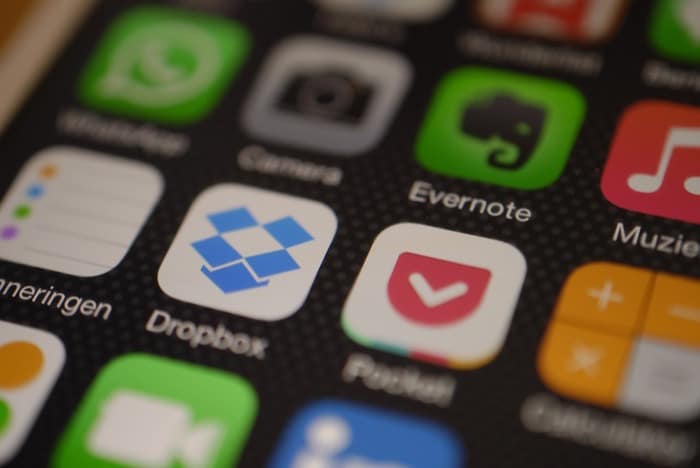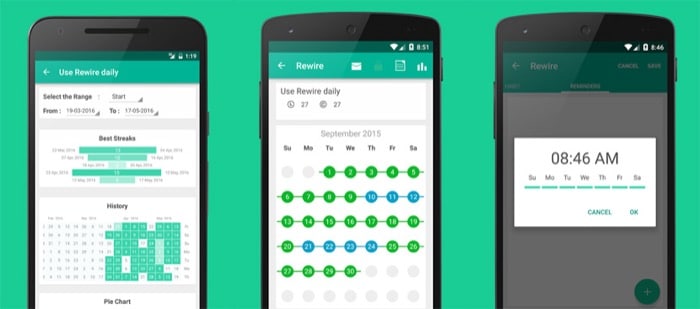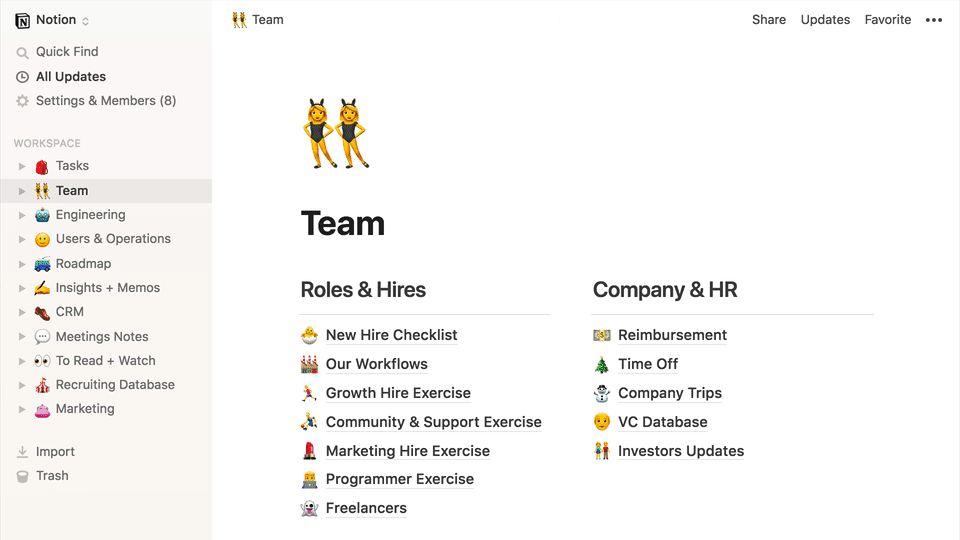These 12 Apps Will Help Boost Your Productivity

Every day, another app or service is unleashed on the world that claims to increase your productivity, corral your to-dos, or assassinate your procrastination.
Keeping track of these products can be a full-time effort on its own, never mind figuring out what they do and if they’re right for you.
But when you’re an entrepreneur starting a business or a business owner trying to grow an existing business, you’re looking for every advantage you can get.
Rest easy because we’ve collected 12 of the latest and greatest productivity products here for you to check out.
Station
Why it’s worthy: If the frequency of new services launching as web apps is any indication, the days of desktop-only productivity may be on the wane.
From long-established stalwarts like Google’s G Suite and Zoho’s expansive selection of apps to recent entrants like Quip, more work is getting done in the browser.
However, using these apps in a web browser can be a pain.
Web browsers weren’t designed to handle apps that stay open all day. Browser makers have added some half-hearted attempts to accommodate these persistent apps through the concept of browser tab “pinning” (here’s how for Apple Safari, Google Chrome, and Mozilla’s Firefox), but overall, it’s a bit of a mess.
Apps like Station attempt to address this issue by acting as a dedicated web app. It takes the apps you’d usually open in your browser and keeps them in their dedicated window, so your web browser can return to doing what it does best; browsing.
Why use an app like Station?
- It keeps your web apps separate from your browser and restores them on launch, so you don’t have to do that yourself
- It lets you create starred links to favorite or frequently-used documents or files (e.g., a specific Google Sheets spreadsheet) that are easy to find and reopen
- It’s dedicated just to web apps, so there are fewer distractions than using a web browser
- It automatically “sleeps” apps you’re not using, so it helps reduce computer memory and CPU use
- It collects notifications from all of your web apps in one centralized location
- It supports a huge list of web apps, with more added frequently
There are many “app organizers” similar to Station out there (Franz, Rambox, and Manageyum are just a few), but Station is one of the best.
Available for:
Mac, Windows, Linux
Cost:
Free
Taskade
Why it’s worthy: Taskade is a task and to-do list app focusing on flexibility, simplicity, and ease of use. Its simple design hides many features, including robust collaboration tools like chat (video, audio, and text) and sharing and collaborating on lists.
Its flexibility allows you to create lists, outlines, and notes and share them in separate workspaces with different collaborators. Taskade’s strength is it doesn’t try to do too much, but what it does, it does with clarity and style.

We won't ask for secrets or specifics.
Available for:
web, iOS, Android, Mac, and Windows
Cost:
Free, with premium accounts and features planned.
Be Focused
Why it’s worthy: Our next choice isn’t a service on its own but an app that helps you focus and split up your work. Be Focused is an app that allows you to use the Pomodoro technique in your workday.
What is the Pomodoro technique? It’s a time and work management system created by Francesco Cirillo in the late 1980s that breaks your work into smaller, more focused intervals of time called, you guessed it, pomodoros.
Named after the tomato-shaped kitchen timer Cirillo used in university, a pomorodo is typically 25 to 30 minutes of focused work time, followed by a short 3-5 minute break. After you’ve done four pomodoros, you take a longer break lasting 15-30 minutes.
The idea behind the technique is rather than forcing yourself to work for a long stretch of time, it’s easier to stay focused when you use “timeboxing” to chop work into smaller intervals. Timeboxing is when you set aside a short amount of time to work on a specific task.
By working for shorter lengths of time, you can reduce the chance you’ll get interrupted and increase the possibility of getting into flow, that mythical state of mind where the work fades away, and you’re fully energized and focused.
Many different Pomodoro apps are available for almost any operating system or platform, but we’ve found Be Focused to be one of the more popular ones.
Its simple interface, powerful tools, and availability across Mac and iOS devices make it a compelling choice.
Available for:
Mac, iPhone, and iPad.
Cost:
Free, although there is a pro version that adds some extra features (and removes ads) for $4.99
Notion / Coda
Why they’re worthy: Notion and Coda are excellent examples of a new breed of apps that blur the lines between document types. They take word-processing elements, note-taking, lists and outlines, and spreadsheets and mash them together into something new.
The concept behind both apps is the documents we create aren’t just one type of thing.
The key here is flexibility: any document you create could have elements of lists, embedded media (including video, audio, and webpages), spreadsheets, wiki-style content, and other data all together in one place.
Both apps are highly collaborative and have many features that make working on the same document across multiple people straightforward.
It would be great, for example, when writing a business plan with co-founders, to collaborate using a product like Notion.
The apps may be similar, but they take different approaches to how they organize your content.
Notion is closely tied to the idea of documents, where flexibility is found in the content you can include and how you can organize and link between that content.
It feels like a supercharged word processor crossed with a wiki, where you can collect many different types of content in one place and then create links and relationships between them.
Coda is similar but feels more like the evolution of spreadsheets. Many of the familiar spreadsheet ideas are here: tables, cells, data, formulas, and organization.
The difference is Coda treats your data as the launching point for many different applications.
Its templates page showcases various ways people have used Coda to create personalized apps: from simple to-do lists and tabular data to kanban boards, trip planning, and even baby-naming tools.
If there’s one thing that separates the two apps, it’s in availability: Notion is widely available across many different operating systems and platforms, whereas Coda currently only works on Google Chrome and requires a beta invitation.
Both apps are compelling, and we’ve only given a brief overview of their possibilities. Your best bet is to look at how some people have used them and see which fits your needs (or both!).
Available for:
Notion: Web, iOS, Android, Mac, Windows
Coda: Web (Chrome browser only)
Cost:
Notion: Free for your first 1000 “storage blocks” with monthly subscriptions available
Coda: Free

Brain.fm has a large list of sounds and AI-generated music to help you sleep better, relax, and be more productive.
Brain.fm / Noisli / Coffitivity
Why they’re worthy: The next three apps are different from those we’ve already looked at. They’re not organizers or document editors, or to-do lists. They’re not classic productivity tools at all.
They help you become more productive by blocking out the chaos of a noisy world. They create predictable sound environments that help you focus and get into the flow.
There’s scientific proof that ambient background noise can positively affect productivity and creativity.
A study by Ravi Mehta at the University of Illinois Urbana-Champaign found that the ideal work environment had a little bit of background noise.
The type and level of the noise were important, as noted in the study:
Each of the groups was subjected to a different level of background noise (50 decibels, 70 decibels, 85 decibels, and total silence). When they scored each person’s test, the researchers found that those in the 70-decibel group, exposed to a moderate level of ambient noise, significantly out-performed those in the other three groups. The background noise boosted their creative thinking.
Mehta elaborated on this in an article from the New York Times, where he said that extreme quiet could sharpen your focus, which prevents you from thinking in the abstract:
This is why if you’re too focused on a problem and you’re not able to solve it…you leave it for some time and then come back to it, and you get the solution. But moderate levels can distract people just enough so that they think more broadly. It helps you think outside the box.
What do you do if you can’t find a place with the right level and background noise quality? That’s where these apps come in.
Each one creates soundscapes designed to help you concentrate and be more creative.
Brain.fm is the most comprehensive of the three, with background sounds designed for three different goals: focus, relaxation, and sleep. It has a huge variety of sound loops and effects to listen to, including nature sounds, ambient music, and more.
Noisli has a more focused list of sounds available, designed for productivity or relaxation. It has a built-in text editor so you can write in the app while you listen to ambient sounds and also has a timer for applying the Pomodoro technique or some other time-based system.
Coffitivity is the most straightforward app of the three, and as you might have guessed from the name, it specializes in the ambient sounds of cafés and coffee shops.
The site was created by a couple of entrepreneurs after they read Mehta’s report on background noise and creativity.
“We had been in and out of coffee shops, and we were getting really good work done,” co-founder Ace Callwood told the New York Times.
One of the other co-founders noticed that his productivity plummeted when he returned to his quiet workspace.
After his request to work from a coffee shop was turned down, he and Callwood decided to bring the coffee shop to them, and Coffitivity was born.
The site offers a selection of different cafe sounds, from “Morning Murmur” to “Brazil Bistro,” which captures “the musical chatter of a Brazillian coffeehouse.”
There is also a Mac app available for offline access.
No matter which solution you choose, based on the science and the long list of pleased customers of all three sites, you should see some benefits from hacking your background noise.
Available for:
Brain.fm: web, iOS, Android
Noisli: web, iOS
Coffitivity: web, iOS, Mac
Cost:
Brain.fm: The first five sessions are free, and there are monthly, yearly, and lifetime subscriptions available
Noisli: Web is free, iOS is $1.99
Coffitivity: Free, with a $9 annual fee that gives you unlimited access
IFTTT / Zapier
Why they’re worthy: These two services are unique in requiring access to other apps to work.
Confused?
The meaning of IFTTT‘s name makes the app’s purpose clear:
“If This, Then (do) That.”
Both apps take information from one service and use it to trigger or cause something to happen with another service.
Command-line experts refer to this process of data in and out as “piping,” and in fact, IFTTT’s name itself is a reference to a software development concept.
Both act as the glue that joins two or more separate services together. You can use them to do things like automatically update your Twitter avatar every time you change your Facebook profile photo or turn on the lights in your smart home when you send a text message to a special number.
The possibilities of the apps are only limited to the services each one supports and your imagination.
Of the two, IFTTT’s learning curve is much gentler, which fits its emphasis on consumer products and services. It has a huge selection of “recipes” created by other users to choose from, and the recipe creator is clear and easy to use.
Zapier’s caters more to small businesses and business needs, and its integrations and “zaps” (what it calls its version of IFTTT’s recipes) tend to cover more work applications.
Zapier’s business and workday focus make the zaps you create more powerful and sophisticated, but that also means getting started is a little more involved than IFTTT.
The power of both apps can’t be understated. However, combining multiple services makes the potential for time savings and productivity gains huge.
Available for:
IFTTT: web, iOS, Android
Zapier: web
Cost:
IFTTT: Free
Zapier: Free plan available. Monthly plans start from $20

HabitHub is an Android app that uses Jerry Seinfeld’s famous “don’t break the chain” habit-forming technique.
Nirow / HabitHub
Why they’re worthy: When we think about habits, we often think about the bad ones: chewing the ends of pencils (or our fingernails), spending too much time on the phone, continually being late; the list goes on and on.
Picking up a bad habit is often far too easy. (I’m looking at you, coffee!)
Developing good habits, on the other hand, can be challenging.
It’s hard to change our behavior for the better; even with our greatest effort, we often fail. As sociologist, Christine Whelan told the Washington Post:
The unsexy and unappealing truth is, behavior change is hard because we’re creatures of habit. To make a change in our behavior, means we’re adding something, or subtracting something, and we have to figure out what that is.
It can be even harder as a businessperson trying to juggle work/life balance, families, business deals, and the countless other things busy entrepreneurs need to keep track of.
And as many articles will tell you, the best business people work hard to develop good habits. Lots of them.
One of the best techniques for establishing a good habit came from an unexpected place: comedian Jerry Seinfeld. His process works like this:
- Choose the thing you want to do.
- Get a big calendar.
- Every day you do that thing, mark a big X on the calendar.
- Your goal is to keep filling days. As Seinfeld said, “don’t break the chain.”
We may not have the luxury of putting up big calendars all over the place, but thankfully, apps make tracking habits easy.
Nirow and HabitHub are mobile apps that help you track habits that you want to establish. These can be anything from “drink more water” to “take more breaks” or “write in my gratitude journal.”
Each one uses a different tactic to help here.
HabitHub uses Seinfeld’s method to track daily habits, whereas Nirow combines a calendar approach with automatic tracking of things like location and health.
Both are beautifully designed and make keeping track of habits easy.
Available for:
Nirow: IOS
HabitHub: Android (with iOS “coming soon”)
Cost:
Nirow: Free, with in-app purchases
HabitHub: Free, with in-app purchases
Wrapping up
The number of productivity apps out there is staggering and keeps growing. As long as there is work, there will be apps that claim to help you get more done faster with less effort.
We hope this list will help you find more time, productivity, and flow in your day-to-day work. If you’re looking for more tips on how to make more time and be more productive, check out some of our other guides:
Design Done Better
The easiest way to get affordable, high-quality custom logos, print design, web design and naming for your business.
Learn How to Grow Your Business With Beautiful Design




